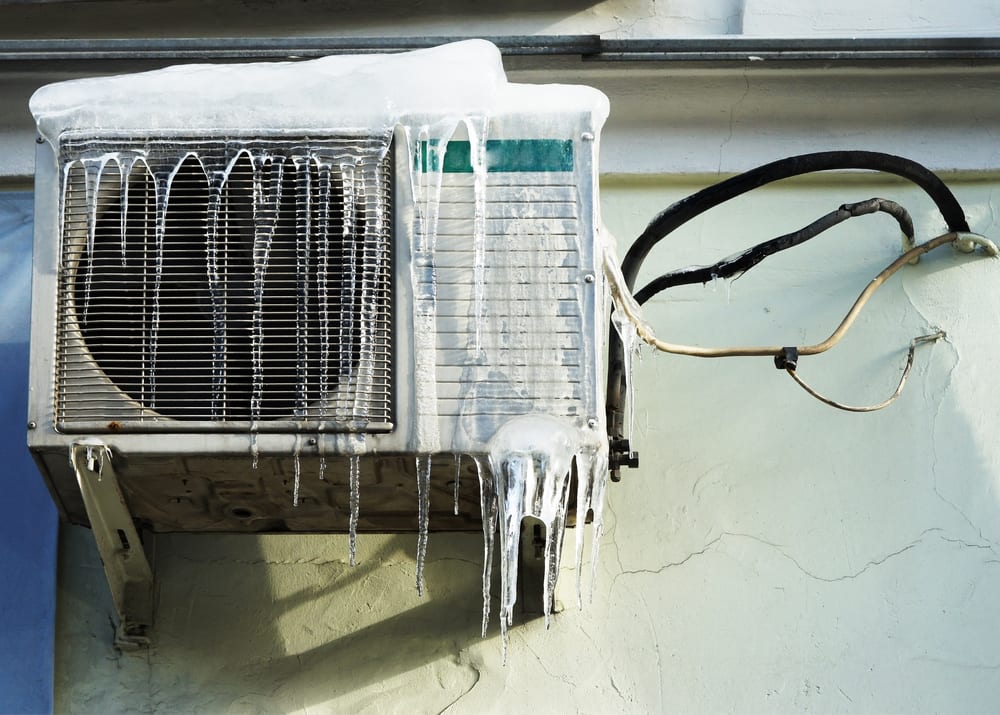The Air Conditioner Pipe Is Completely Frozen - What Do I Do? Guidance for Remedy
The Air Conditioner Pipe Is Completely Frozen - What Do I Do? Guidance for Remedy
Blog Article
We have discovered this article relating to Have a Frozen AC Line? Here’s How to Fix It down the page on the net and felt it made sense to relate it with you in this article.

Introduction
Finding that your a/c pipeline is frozen can be worrying, especially during hot summer season when you depend on your ac system the most. Comprehending what to do in such a situation is important to avoid more damages to your air conditioning system and guarantee your convenience inside.
Understanding the Causes
Several factors can contribute to the freezing of an a/c pipeline. Comprehending these causes can assist you deal with the problem properly.
Absence of Airflow
One usual source of an icy a/c pipe is inadequate air flow. When the airflow over the evaporator coil is restricted, it can create the coil to go down below freezing temperature level, causing ice development on the pipe.
Low Refrigerant Levels
Insufficient refrigerant degrees in your air conditioner system can additionally lead to a frozen pipe. Low cooling agent degrees can trigger the pressure in the system to drop, leading to the cold of dampness on the evaporator coil.
Cold Weather Conditions
In colder climates, freezing temperature levels outside can add to the cold of a/c pipes. If your AC device is not appropriately protected or if there are leakages in the ductwork, cool air can penetrate the system, triggering the pipe to ice up.
Dirty Air Filters
Dirty or clogged up air filters can restrict airflow in your air conditioner system, causing different concerns, including a frozen pipeline. It's important to change or clean your air filterings system regularly to make sure correct airflow and protect against ice build-up.
Indications of a Frozen Air Conditioning Pipe
Identifying the indications of a frozen a/c pipe is vital for prompt activity.
Reduced Airflow
If you see a considerable decline in airflow from your vents, it might indicate an icy pipe.
Ice Buildup on the Pipe
Noticeable ice accumulation on the cooling agent line or the evaporator coil is a clear indicator of an icy air conditioning pipeline.
Strange Sounds from the Unit
Uncommon sounds, such as hissing or bubbling, originating from your air conditioning device can signal that there's ice existing on the pipeline.
Immediate Actions to Take
When faced with a frozen a/c pipe, it's important to act quickly to avoid further damages to your cooling system.
Switching off the AC
The initial step is to switch off your air conditioning system to prevent the system from running and worsening the issue.
Looking for Blockages
Inspect the area around the interior device for any obstructions that may be obstructing airflow, such as furniture or drapes.
Defrosting the Pipe
You can make use of mild methods like putting towels taken in warm water around the icy pipeline to help thaw it slowly.
Preventive Measures
Taking safety nets can aid stay clear of future occurrences of a frozen a/c pipeline.
When DIY Methods Fail
If your efforts to thaw the pipe or address other problems are unsuccessful, it's time to call an expert.
Value of Hiring a Professional HVAC Technician
A licensed HVAC specialist has the expertise and devices essential to detect and fix concerns with your air conditioner system securely and properly.
Regular Maintenance Checks
Set up regular maintenance get in touch with a professional HVAC service technician to guarantee that your a/c system is running effectively.
Altering Air Filters
On a regular basis change or cleanse your air filters to avoid air flow restrictions and maintain optimum efficiency.
Shielding Exposed Pipes
If your a/c pipelines are revealed to chilly temperatures, consider insulating them to avoid freezing during winter months.
Looking For Professional Help
If DIY approaches stop working to settle the concern or if you're unclear regarding exactly how to continue, it's finest to seek assistance from a certified HVAC service technician.
Final thought
Dealing with an icy a/c pipeline can be a discouraging experience, but recognizing exactly how to respond can aid reduce damages and bring back comfort to your home. By recognizing the reasons, acknowledging the indicators, and taking timely action, you can properly deal with the issue and stop future occurrences.
What to Do If Your AC Line Is Frozen
Make Sure All Supply and Return Air Vents Are Open
If you notice problems with airflow, the first thing you should do is check your supply and return vents. Supply vents distribute clean, conditioned air throughout your home. As this air becomes stale, it’s pulled into the return vent, where it’s reconditioned before being sent back out through the supply vent.
When these vents are closed, air won’t flow in the home. Before examining your AC, check the vents in every room and ensure they’re all open.
Check for a Dirty Air Filter
Another possible cause of limited airflow is a dirty air filter. Your air conditioner’s filters catch elements you don’t want to breathe in, such as dirt and dust. Over time, filters can become clogged, ultimately blocking air from flowing in and out. The lack of airflow can then cause the entire coil to freeze and will completely restrict any air from moving through it. The AC may need to be powered off for one to two days to allow the coil to thaw after replacing the filter to allow proper functioning of the unit. This debris can also accumulate on your AC’s evaporator coil, requiring a more serious repair. In general, air filters should be cleaned regularly (about every two weeks).
Assess Your Outdoor Unit
In addition to checking your AC, assessing the outdoor unit is a good idea. Also known as the condensing unit, it works with your interior unit to release heat outside. An issue with the outdoor unit can result in rising internal temperatures.
Overgrown Shrubs or Clogged Leaves
From leaves and twigs to shrubs and debris, there’s no shortage of outdoor elements that can accumulate around your condensing unit. When these elements get lodged inside the unit, they can block airflow. Fortunately, removing the blockage can solve the problem.
Sounds of a Broken Fan
Shrubs and leaves aren’t the only things that can impede your outdoor unit’s airflow. If the fan is broken, the unit won’t be able to properly get rid of heat — which means the internal temperature won’t go down. First, make sure the fan is spinning. If it is, check for the following sounds of a broken fan:
Buzzing Rattling Screeching Hissing Clicking Preventative Measures
Nobody wants to deal with a frozen AC line. In addition to causing problems with your air conditioner, they require professional repairs. On the bright side, there are preventative measures you can take to help ensure this issue doesn’t arise in the first place.
https://www.coopergreenteam.com/blog/what-to-do-if-ac-line-frozen

I was shown that editorial about What Do I Do If My AC Pipe Is Frozen through an acquaintance on our other web blog. Enjoyed reading our post? Please share it. Let someone else locate it. I praise you for your time. Don't forget to stop by our site back soon.
Book A Service Call Report this page